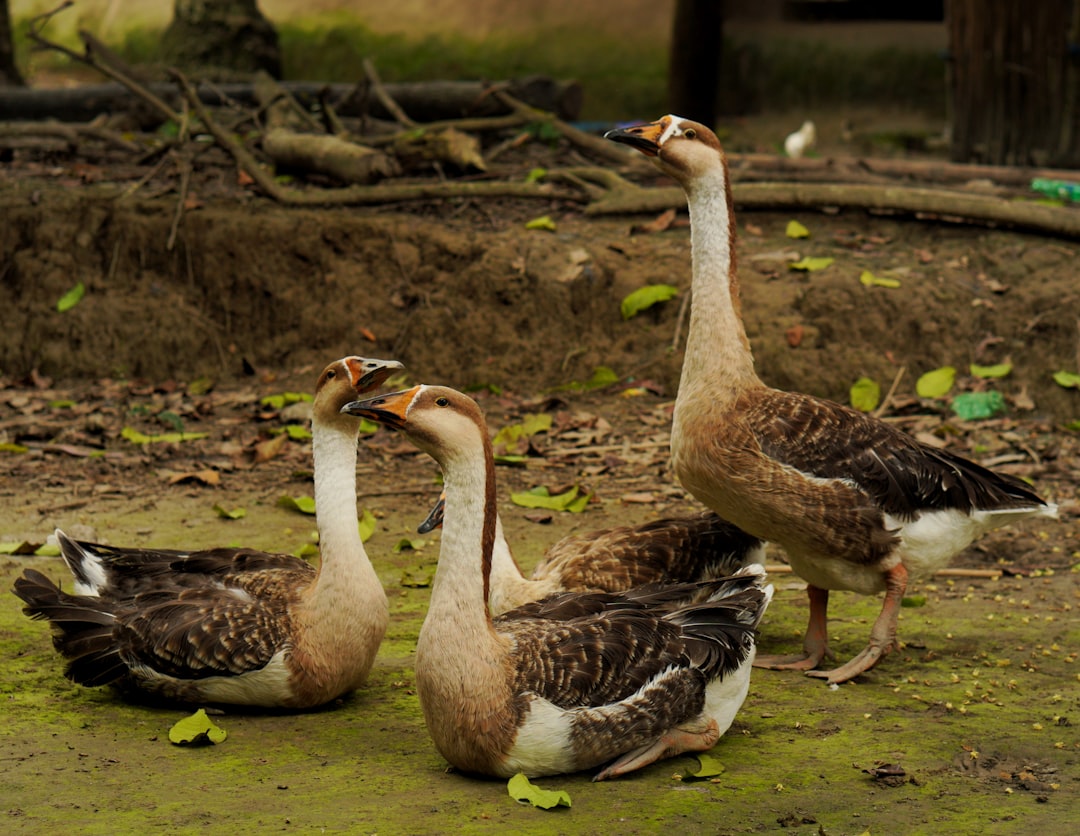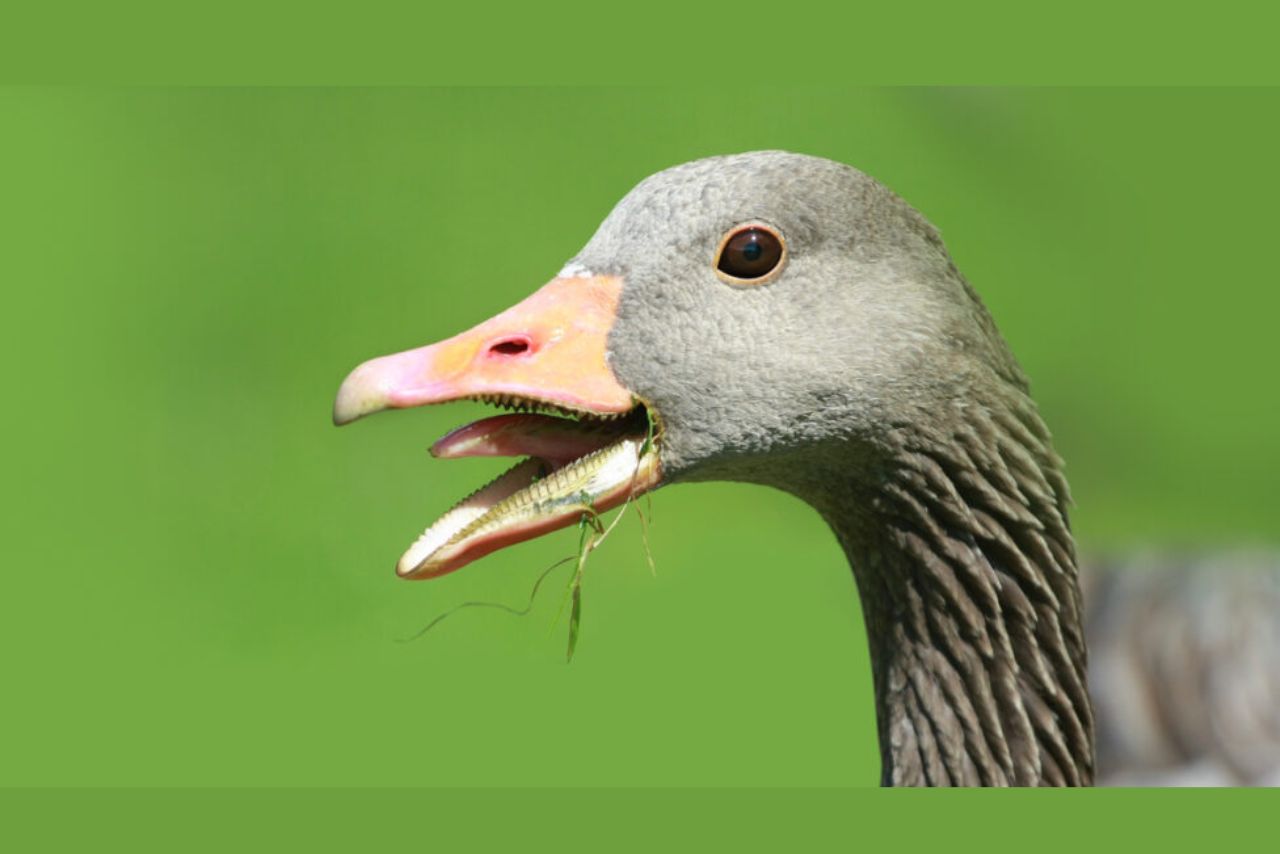Ducks are aquatic birds that have captured the attention of many. One question that has been asked by curious individuals is whether ducks have teeth or not.
This article aims to explore the dental structure of ducks and provide answers to this question.
We will discuss the specialized bill and digestive system of ducks, which help them to filter and digest their food.
Join us as we unravel the mysteries of duck anatomy and uncover the truth about whether ducks have teeth or not. So, Do Ducks Have Teeth?
No, ducks do not have teeth. Instead, they have a specialized bill that allows them to filter food from the water.
Their bill is lined with small, comb-like structures called lamellae, which help them grip and filter food.
Ducks also have a muscular gizzard that grinds up food, allowing them to digest it more easily.
While ducks do not have teeth, their unique adaptations enable them to thrive in their aquatic habitats and enjoy a varied diet.
Importance Of Teeth (Bills!) In Ducks
Although teeth are important for many animals to chew and break down their food, ducks have evolved to survive without them.
Their unique bill and digestive system allow them to find and consume a diverse range of foods in their aquatic environment.
From plants to small fish and insects, ducks are able to filter and digest their meals efficiently.
What Is The Duck Bill Made Up Of? (Anatomy Of Duck Bills)
The “duck bill” is made up of a tough outer layer called the rhamphotheca, which covers a network of nerves and blood vessels that give it its sensitivity.
The upper and lower mandibles are hinged together at the base with muscles, allowing them to open and close the bill while filtering food.
The lamellae on the inner side of the bill have tiny bristles that act like filters, trapping plankton and small aquatic animals.
Furthermore, ducks use their bills for other important functions such as preening their feathers and courtship displays during breeding season.
In some species, males may even engage in “bill fencing” where they clash their bills together as part of their mating ritual.
The Dental Structure Of Ducks
Ducks have a unique dental structure that sets them apart from other animals.
Their bill is lined with lamellae, which are small comb-like structures that help them to filter their food.
These structures act like tiny teeth, allowing ducks to grip and filter their food from the water.
Additionally, ducks have a muscular gizzard that grinds up their food before it enters their digestive system.
While ducks may not have teeth in the traditional sense, they have evolved specialized adaptations that allow them to thrive in their environment.
In conclusion, ducks do not have teeth but instead possess a unique and highly adapted bill that enables them to filter and digest their food.
Some important points that will provide proper information about dental structures of ducks are as below:
Spatulate Shape:
The shape of a duck’s bill is also important in understanding their dental structure.
The spatulate shape of the bill allows ducks to scoop up food from the water, and the lamellae on the edges of the bill help them filter out unwanted materials.
The size and shape of a duck’s bill can vary between species depending on their diet and habitat.
For example, diving ducks have bills that are more pointed to help them catch fish, while dabbling ducks have broader bills for filtering through vegetation.
Lamellae:
The lamellae on a duck’s bill are an important part of their dental structure.
These small comb-like structures are found on the inside of the bill and act like tiny teeth, allowing ducks to grip and filter their food from the water.
The number and size of lamellae can vary between different species of ducks, depending on their diet and habitat.
For example, dabbling ducks that feed mainly on vegetation have more numerous but smaller lamellae compared to diving ducks that eat fish and have fewer but larger lamellae.
Nail:
Another important aspect of a duck’s dental structure is their nail. Ducks have a small, pointed nail that protrudes from the tip of their bill.
This nail helps them to grasp and manipulate objects, such as when they are preening their feathers or building their nests.
The nail is also used during courtship displays, where males may use it to gently touch the female’s bill.
Grin Patch:
In addition, the absence of teeth in ducks is not a disadvantage. It actually allows them to consume a wider variety of foods than if they had traditional teeth.
Ducks are able to eat hard-shelled creatures such as snails and crustaceans without worrying about damaging their teeth.
They also do not have to spend time constantly sharpening and maintaining their teeth like many other animals do.
Biting Of Ducks Hurt Or Not:
While ducks can bite, their bites are not usually harmful to humans.
Ducks may bite as a means of defense or if they feel threatened, but in most cases, their bites are more like pinches and do not break the skin.

However, it is important to remember that ducks are wild animals and should be treated with respect and caution.
Did Ducks Ever Have Teeth?
While modern-day ducks do not have teeth, some of their ancestors did.
Fossil evidence shows that the earliest ducks had teeth, but over time they evolved to lose them.
The loss of teeth was likely due to the development of the lamellae and muscular gizzard, which provided a more efficient way for ducks to filter and digest their food.
Furthermore, the absence of teeth in ducks is not unique among birds.
Many other aquatic birds such as pelicans and cormorants also lack traditional teeth and have developed alternative ways to catch and consume their prey.
In conclusion, while ducks may not have teeth now, they once did.
What Are Duck Teeth Called?
Ducks do not have teeth in the traditional sense, but their specialized dental structure includes the presence of lamellae, a muscular gizzard, and a small nail.
However, some people still wonder what duck teeth are called.
The answer is that the lamellae-lined edges of their bills are often referred to as “teeth.” These tooth-like structures help ducks grip and filter food from water or mud.
Furthermore, different species of ducks have varying degrees of tooth-like structures on their bills.
For example, mergansers have serrated edges on their bills that resemble saw-teeth, which allow them to catch slippery fish more easily.
Meanwhile, other species such as mallards have less pronounced lamellae on their bill edges.
How Ducks Eat Food And Digest It?
Ducks have a unique way of eating and digesting food that is different from mammals.
When ducks consume their food, it enters their stomach where it is broken down by the muscular gizzard.

The gizzard grinds up the food into small pieces to aid in digestion.
After this process, the partially digested food passes through the intestine where nutrients are absorbed before being excreted as waste.
In addition to their gizzards, ducks also have specialized bills that help them filter and consume a variety of foods.
The lamellae-lined edges on their bills act like strainers, allowing them to filter out small particles from water or mud.
This adaptation allows ducks to consume a diverse range of foods including aquatic plants, insects, and small fish.
If Ducks Have No Teeth Then How They Bite Food?
While ducks do not have traditional teeth, they are still able to bite and grip food using their specialized bills.
The tooth-like structures on their bills, known as lamellae, allow them to firmly grasp and filter food from water or mud.
Additionally, the small nail at the end of their bill helps them to hold onto objects while eating.
Ducks Don’t Chew:
This unique adaptation of not chewing food is common among birds and allows them to quickly consume and digest their food while minimizing the risk of predation.
After consuming their food, ducks also have a unique way of excreting waste. Unlike mammals, ducks do not have a separate opening for excretion and reproduction.
Last Talk
Ducks may not have teeth in the traditional sense, but they have evolved specialized adaptations that allow them to consume and digest food in their aquatic habitats.
Their tooth-like structures on their bills and muscular gizzards are crucial for their survival.
Do Ducks Have Teeth? Understanding how ducks eat and digest their food highlights the importance of adaptation for survival in nature.
While this unique adaptation of not chewing food is common among birds, it is fascinating to see how each species has evolved its own specialized way of surviving in diverse environments.
Ducks are a perfect example of the incredible diversity found in nature and how each adaptation plays a vital role in ensuring their survival.
FAQs
Do ducks have traditional teeth like mammals?
No, ducks do not have traditional teeth.
How do ducks bite and grip food without teeth?
Ducks use tooth-like structures called lamellae on their bills to grip and filter food from water or mud.
Can ducks chew their food?
No, ducks do not chew their food.
What is the purpose of the gizzard in a duck’s digestive system?
The gizzard grinds up food into small pieces to aid in digestion.
Do different species of ducks have different adaptations for consuming food?
Yes, different species of ducks have varying degrees of tooth-like structures on their bills that are adapted for different types of food.




